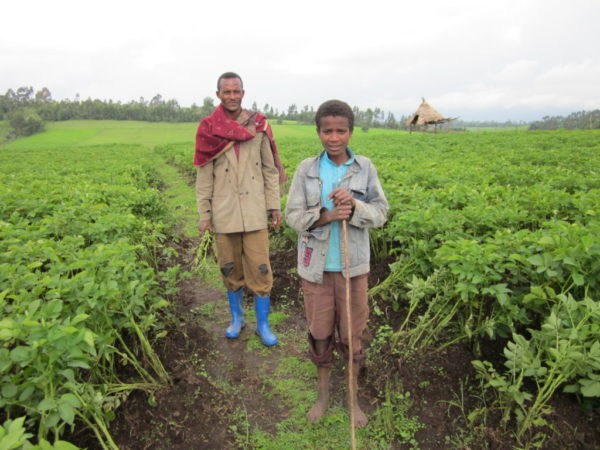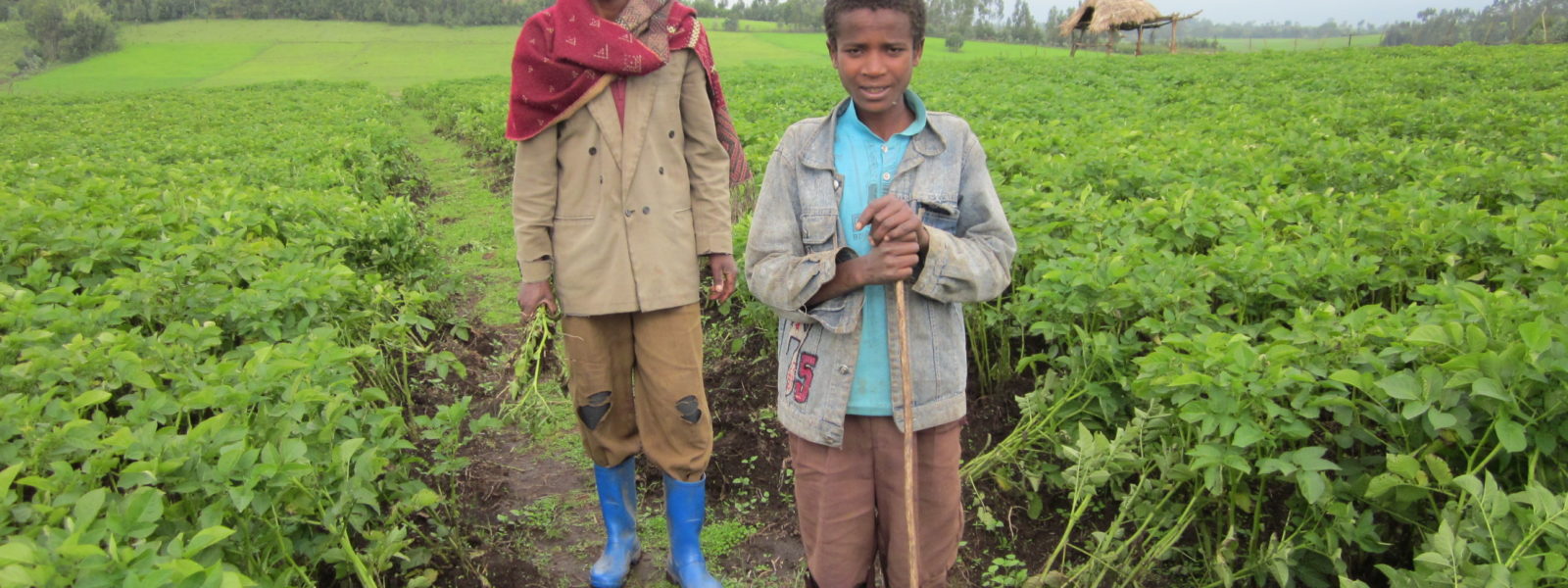Scientists from the International Potato Center (CIP) are developing potatoes with high micronutrient content as part of a broader effort to address micronutrient deficiencies, which disproportionately affect the health of rural women and children. Those efforts have resulted in new potato breeding populations of nutrient-dense candidate varieties with up to 32–45 parts per million (ppm) dry weight iron and 22–37 ppm dry weight zinc, depending on the variety and location where the crop is grown. This represents an increase from baseline levels of 20 ppm iron and 16 ppm zinc in most potato varieties. Assuming bioavailability of 15%, eating 200 grams per day of a potato variety from the high range of these populations would provide 30% of the estimated average requirement of iron for a woman of child-bearing age, compared with just 12% from currently available potato varieties.

Farmers in Ethiopia with the biofortified potato. Photo: G.Wgiorgis/Ethiopian Institute of Agriculture Research.
Andean-type, biofortified candidate varieties with outstanding culinary properties from these populations are in the advanced stages of evaluation in Rwanda, Ethiopia and Peru, whereas higher-yielding, commercial-type candidate varieties will be distributed for testing in September 2017. Merideth Bonierbale, leader of CIP’s Genetics, Genomics and Crop Improvement Division, explained that these candidate varieties are the products of an intricate process that began with the identification of Andean landraces with relatively high mineral concentrations. This breeding population then underwent recurrent selection to increase iron and zinc levels, followed by crossing with parental lines bred for other traits – but still relatively high in iron or zinc content – in order to produce high-yielding, disease-resistant and resilient biofortified potatoes.
Read the full story in the RTB 2016 Annual Report
